The tour takes the visitors to the trek blended with a cultural tour of scenic Bumthang valley in central Bhutan. As the tour starts from Paro in western Bhutan the sightseeing and short hikes are also around western districts of Paro, Thimphu, Wangdue Phodrang and Trongsa district. But most of the trekking will be around Bumthang where trekking will be along Chamkhar chuu (Bumthang river) and reach to Ngang Valley (swan valley). The trek will ascend about 3352m above sea level to Phephela pass and also camp overnight at an altitude of 2743m. Bumthang valley has several trekking routes and imposing religious landmarks to offer. This tour covers all those sites, therefore, giving visitors the opportunity to indulge and understand central Bhutan’s culture and relish picturesque sceneries.
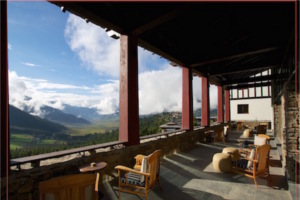
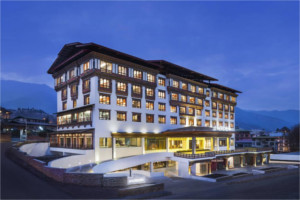
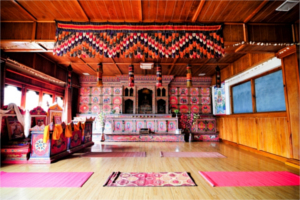
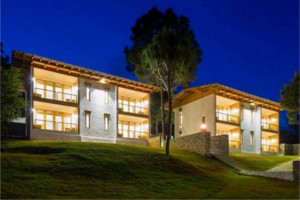
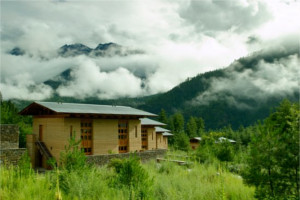
Welcome ceremonial reception by our representative at a traditional farm house. Transfer to the hotel at Paro. Visit Paro town in evening.
Overnight at Paro.
Early morning breakfast
Visit Ta Dzong, the National Museum. It was originally built as a watchtower in 1649, strategically located overlooking the Rinpung Dzong and the Paro valley. The watchtower was renovated in 1968 and transformed into national museum. The round shaped structure houses collection of Thangkas, 3D map of Bhutan, egg believed to be laid by a mule, iron links from Iron Bridge at Tamchog and many ancient and modern artifacts.
Note: Photography and videography are not allowed inside the museum.
Visit Rinpung Dzong, the administrative and religious center of Paro Dzongkhag (district). The fortress name translates to “Fortress on a Heap of Jewel” and has long history of having defended Tibetan invasion through the site.
Drive 14kms north to Drugyel Dzong, after a massive destruction by fire the Dzong remained as ruin for several years until recently to commemorate the birth of Gyalsey the prince, the Dzong is undergoing reconstruction to its former glory.
After lunch drive 40min to Thimphu.
Overnight at Thimphu.
Breakfast
Visit the National Memorial Chorten (Stupa), built in memory of the 3rd King of Bhutan. Visit the Art School and Changangkha Lhakhang (a temple built in 12th century by a Tibetan saint).
Lunch
Visit the National Takin Reserve Center to see Takin, the national animal of Bhutan and Trashichhodzong (fortress of glorious religion). Trashichhodzong in its current form was completed in 1968 and it houses the throne room of His Majesty the King of Bhutan. It is also a center of monastic body and houses main secretariat building. The majestic Dzong located along the Wangchu (Thimphu River) has a Tendrel Thang which is the venue for Thimphu Dromchoe and Thimphu Tsechu, the annual Thimphu Festival where thousands of people fill the courtyard to witness the mask dances, traditional dances, and many more.
Visit Semtokha Dzong, five miles from main Thimphu town, the Dzong is considered to be the first ever built by Zhabdrung Ngawang Namgyel in 1629, therefore the oldest fortress in Bhutan. Located on a ridge overlooking the entire valley, the Dzong houses a chapel for protective deities Yeshe Goenpo (Mahakala) and Palden Lhamo of Bhutan.
Visit handicraft market and centenary farmers market.
Early breakfast
Drive to Trongsa. Stop at Dochula pass 3100m on route to Trongsa from Thimphu. Dochula pass is one of the famous landmarks in Bhutan from which one can sight the Himalayan Range of Bhutan on clear winter days. The place is adorned with Druk Wangyel Chorten, 108 stupas built to honor the 4th king of Bhutan and bring peace to the region. The stupas were built under the patronage of Ashi Dorji Wangmo Wangchuck.
Descend to Punakha Valley (1280m).
Punakha valley served as the capital of Bhutan till 1955 until it was shifted to Thimphu. The Punakha Dzong is still the winter seat of Je Khenpo (Chief Abbot) of the monastic body as the place has a temperate climate with Phochu and Mochu Rivers flowing through the fertile fields of the valley.
Visit Punakha Dzong.
Punakha Dzong or Pungthang Dewa Chenpai Phodrang, the palace of bliss was built in 1937 by Zhabdrung Ngawang Namgyel. The second oldest Dzong is religiously and architecturally significant to Bhutanese as it houses several sacred relics, scriptures, statues and is the place where the first king of Bhutan was crowned in 1907. Punakha Dzong is also famous for Punakha Drupchen where the 17th-century battle scene with Tibetan invaders are recreated and is followed by Punakha Tsechu where grand Thongdrel of Guru Rinpoche is unfurled with costumed mask dances and rituals.
Drive to Wangdue Phodrang valley, visit around the town.
Lunch at Wangdue Phodrang.
Drive on east-west national highway towards Trongsa with short stop at Chendibji Chorten after crossing Pelela pass (3300m).
Reach Trongsa. Visit around the Trongsa town.
Overnight at Trongsa.
Early breakfast
Visit Trongsa Dzong, the fortress is the largest of its kind in the country. The grandfather of Zhabdrung Ngawang Namgyel is believed to have laid the foundation for the Dzong in 1543. However the actual Dzong was completed only by 1648. The first king, Ugyen Wangchuck, was appointed Trongsa Poenlop before he was unanimously appointed as the first hereditary monarch of Bhutan on December 17, 1907. Trongsa Dzong also played an important role in the history of Bhutan as an administrative base controlling both the eastern and the western part of the country.
Drive to Bumthang which takes about 3hrs.
Visit around Chamkhar town, and to holy places of Jambey Lhakhang, Kurjey Lhakhang, Tamshing Lhakhang, Kencho sum Lhakhang and Jakar Dzong.
Overnight at Bumthang
Early Breakfast
Start a trek of 20km distance along Chamkharchu, the main river of the valley and stop at Tangbi Monastery for lunch.
Continue trekking till Swan valley locally known as Ngang Valley. The Ngang Lhakhang or the monastery is located in middle of the valley.
Camp at Ngang valley.
Ascend gradually to Phephela (3352m), the highest point of the trek. The trail via the pass extends along beautiful forests of the region, also offers view of Ugyencholing Palace along the route.
Camp at Ugyencholing.
Descend down to the Bumthang valley. Visit the famous Mebar Tsho, also known as burning lake was the site where Terton Pema Lingpa (Treasure Discoverer) is said to have discovered relics and artifacts from under the lake.
Lunch at Bumthang
Drive back to Trongsa.
Overnight at Trongsa.
Early breakfast.
Drive to Punakha. Visit Khamsum Yulley Namgyel Chorten.
The eminent Monastery which is also referred as Punakha Zangdopelri was built with the sponsorship of her Majesty the Queen Mother Ashi Tshering Yangdon Wangchuck under the guidance of Dilgo Khyentse Rinpoche and Lam Sonam Zangpo to bring peace in the world. The short hike up to the Lhakhang along the paddy fields is one of the most scenic short hikes one can take and the view from the top of the Lhakhang is often described as picturesque, breathtaking and enriching by the visitors.
Photography: Anytime.
Overnight at Punakha.
Drive back to Paro.
Lunch at Dochula pass.
Overnight at hotel in Paro.
daily tariff:USD 250 Per person per night
surcharges:
Solo Traveller: USD 40 per night
Dual Traveller: USD 30 per person per night
Three travellers and above: surcharges not applicable
Visa fees: One time payment of USD 40 per person.
daily tariff:USD 200 Per person per night
surcharges:
Solo Traveller: USD 40 per night
Dual Traveller: USD 30 per person per night
Three travellers and above: surcharges not applicable
Visa fees: One time payment of USD 40 per person.
A minimum of 3 star accommodation (4 & 5 star may require an additional premium).
All meals
A licensed Bhutanese tour guide for the extent of your stay
All internal transport (excluding internal flights)
Camping equipment and haulage for trekking tours